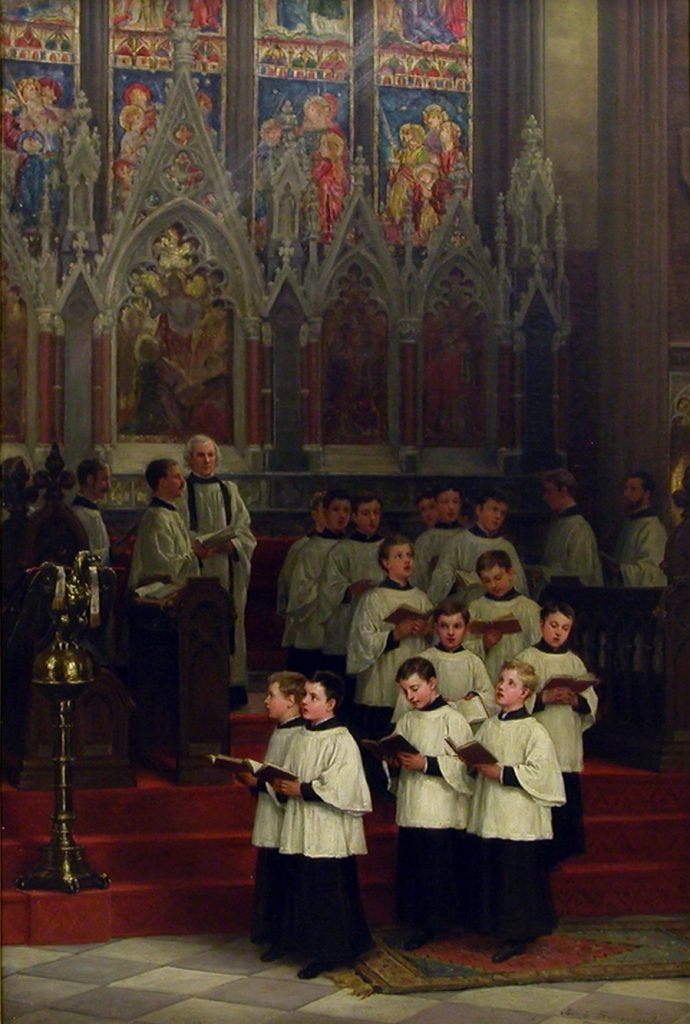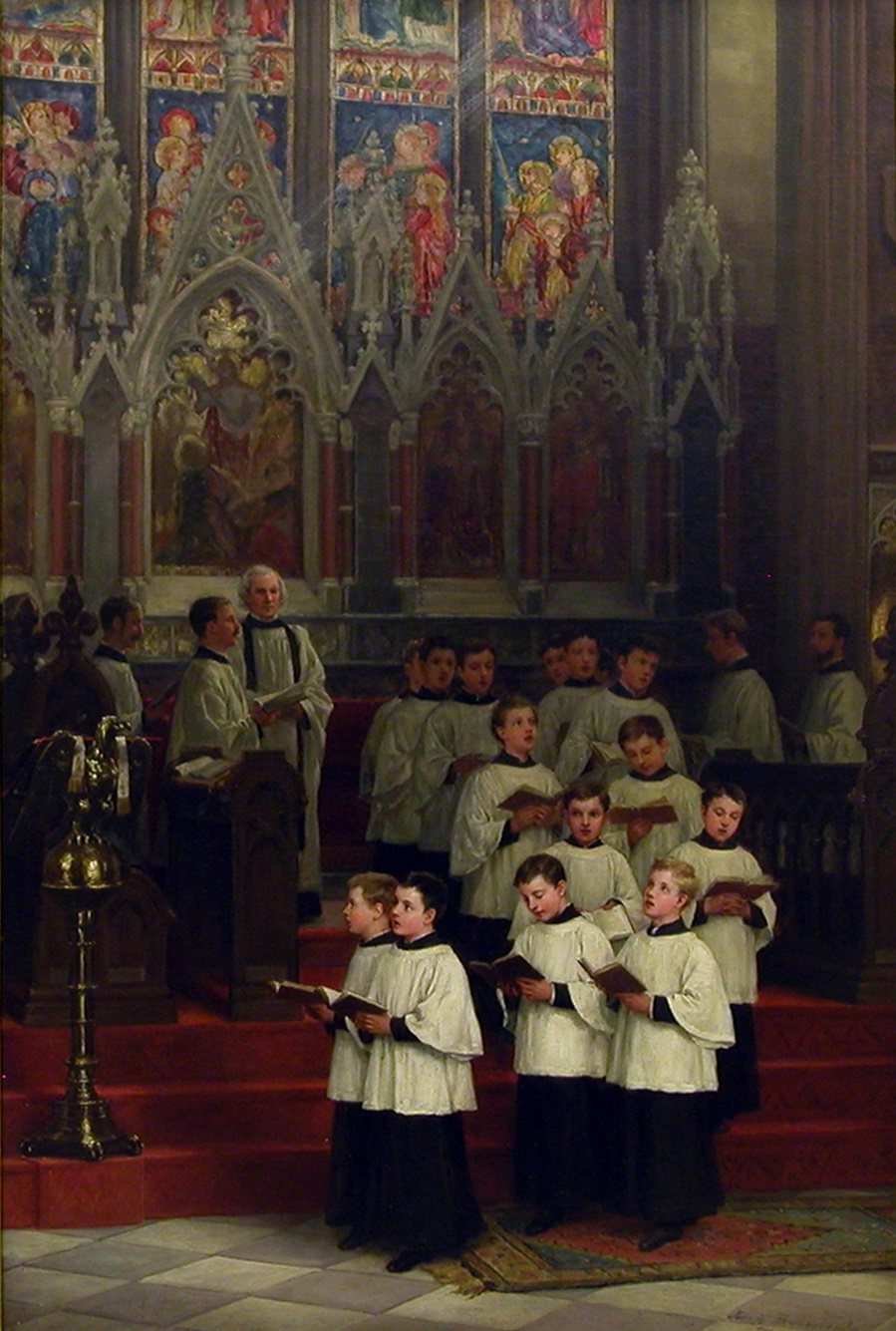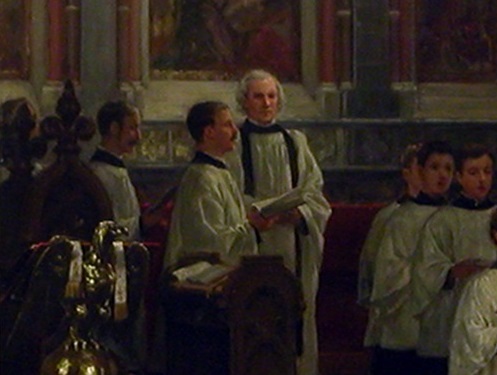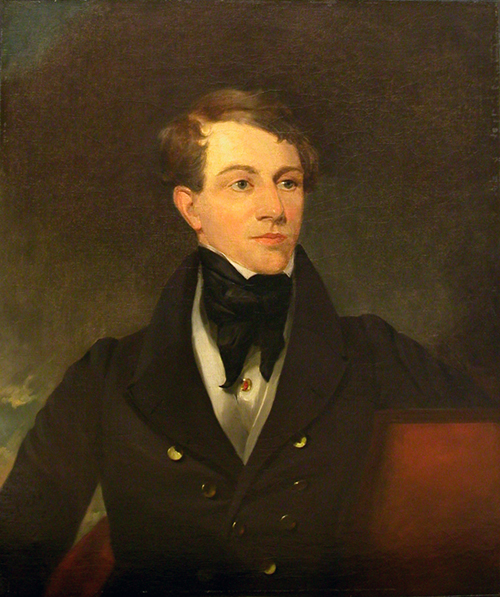In the very first entry in this blog series I wrote about connoisseurship, one of the processes art historians use to help determine which works of art are by which artists. I was reminded of that post this morning, as I considered The Choir Boys, a late-nineteenth-century painting by the American painter Jennie August Brownscombe in the collection. Brownscombe, who was popular in her day, has received relatively little art historical attention.1 As a result, I was unable to proceed with research until I tracked down a copy of An Ideal Subject: The Art of Jennie Brownscombe, a catalogue published in 2010 to accompany an exhibition of her work at the Hope Horn Gallery at the University of Scranton, in Pennsylvania.2 As I usually do when I start work on an artist, I took a look at the documents from the CFAM curatorial file on the work, as well as a photograph of the painting. Curatorial files are maintained by museums as repositories of information on individual objects in the collection. Often, they are little more than a gift or purchase agreement, though they ideally contain much more information about the work. In essence, a large part of my work on this project is in the service of fleshing out the curatorial files on the American collection. In the case of Choir Boys, which was the generous gift of Mr. and Mrs. William Curtiss in 1957, the file consists of a copy of the gift agreement (the Curtisses also gave two additional paintings, two posters, and an ostrich-feather fan) and nothing else, which, as I said, is not unusual.

Oil on canvas, 36 in. x 24 in. painting, Gift of Mr. And Mrs. William Curtiss, 1957.19
The gift agreement gives the date of the painting as 1850. Eagle-eyed readers will have noticed that Brownscombe was born that very year, making this dating impossible. For me, as soon as I saw the photograph of the artwork, and not yet knowing the artist’s birthdate, I knew that it couldn’t be from 1850. And that gets me back to connoisseurship. As I noted in my previous post on the subject, connoisseurship isn’t really taught in the way it was a hundred years ago. While art historians do still have an interest in attributing works to individual artists, they are more likely to rely on a combination of archival research and technical analysis to make that attribution than they are to use learned intuition alone. At the same time, art historical training above all else involves a lot of time spent contemplating individual works of art. One starts to get a sense of what artworks from various time periods tend to look like. In my case, I knew immediately that I was looking at a work from the end of the nineteenth century, rather than the middle. Spending a little time looking at it, I began to pick out why. Most obvious are the hairstyles: the men at the left of the painting are sporting close-cropped hair and trim mustaches that absolutely scream “1890s.” Contrast them with Thomas Sully’s 1841 Portrait of Lieutenant William Henry Korn. Korn sports a loose, side-swept hairstyle befitting a stylish young man of his era, but one that would look out of place in the later painting. Other factors, including the saturation of the color, the vertical format (less common in genre paintings from earlier in the nineteenth century), and the general technical virtuosity of the work (genre paintings of the 1850s tend to have simpler compositions, though this is not universally true), argued in my mind for a later date.
As it turns out, I was treading on familiar ground. The CFAM collections database lists the work as dated circa 1895, not 1850. Someone had already realized the misdate and done the research to correct it, so I need not have worried. As I dug into the literature on Brownscombe, I began to see why my intuition was correct. Brownscombe belonged to the first generation of American women painters who received widespread formal instruction in academies, rather than in the earlier apprenticeship-based system. She studied in New York, first at The Cooper Union, then the National Academy of Design, and finally as a founding member of The Art Students League.3 This academic training is reflected in her painting, which is careful and orderly. The way in which the double file of choir boys snakes back into the scene is particularly well done, showing her strong understanding of perspectival space. The literature also sheds light on the format. Brownscombe, like many artists of her day, supported herself while she was a student by doing illustrations for popular magazines, including Harper’s Weekly and Scribner’s. Even once she was established as a painter, a large portion of her income came from popular prints based on her work.4 This painting is one such work, published as an etching by New Jersey printmaker James S. King. Though it does not seem to have been included in a publication, the unusually tall and thin format would have been familiar to Brownscombe from her work for Harper’s and other magazines.
I would have saved myself a bit of time and excitement if I
had looked at Brownscombe’s biography before I looked at the picture, but I was
happy to see that I’ve still “got it,” as it were. At the same time, however, I
know that it isn’t always that easy. Brownscombe was well known
for her historical scenes, becoming something of a specialist in painting
and illustrating the social lives of George and Martha Washington.5 A
member of a large number of historical preservation organizations, including
the Daughters of the American Revolution (she traced her ancestry on her
mother’s side back to 1630s Boston), Brownscombe was a careful delineator of historical
fashions and hairstyles.6
That’s why I’m glad scholars of my generation have a wealth of tools at our
disposal beyond connoisseurship, though it’s always fun to try my hand at it.
1 Kent Ahrens, “Jennie Brownscombe: American History Painter,” Woman’s Art Journal 1, no. 2 (1980): 25.
2 Jennie Augusta Brownscombe et al., An Ideal Subject: The Art of Jennie Brownscombe (Scranton, PA: Hope Horn Gallery, 2010).
3 Brownscombe et al., 8–10.
4 Brownscombe et al., 10.
5 Brownscombe et al., 14–17.
6 Brownscombe et al., 18.



